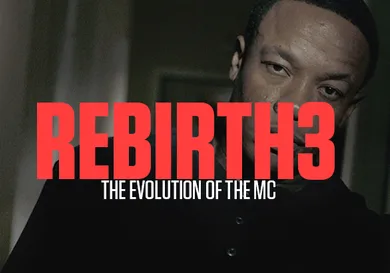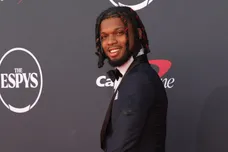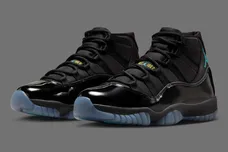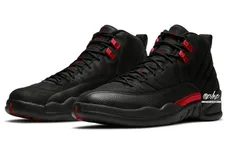Rapper, Lyricist, Rhymesayer. All labels for one person: the MC. The MC not only has many different aliases but comes with many different personalities: the gangster, the conscious individual, the partygoer, the player, the everyperson.
MCs are a dime a dozen these days. Can you name one that doesn’t sound or look like the next rapper you happen to listen to? There may be a few, but these left-field artists seem to predominantly reside underground while Planet Mainstream is filled with rap stars who seemingly mimic each other. Often times they spit the same type of flow, and talk about the same type of subject matter. Granted, hip-hop has its phases and we've all seen adapt accordingly. But is it a crime for an MC to just be him or herself and not choose the same crowded path that others follow in order to attain that fame?
Obviously not, if you look at the Andre 3000s, Eminems and Kendrick Lamars of the rapsphere. But for every Lil Wayne, there's a thousand other Lil’ or Young’s. For every Rick Ross, there’s a thousand bawses. All dressed in white t-shirts and slim fit jeans just baggy enough to expose what type of boxers are worn underneath. As a result, you have to wonder: where is the (individual) MC? Or rather, where did the MC go?
So who killed the MC? Is he actually dead? There are many persons of interest, ranging from the record labels to the fans to the artists themselves. And while it’s more of a kidnapping than an actual murder, the fact remains that something got left behind on that artist’s way to super stardom.
The Golden Age of Diversity
Picture this. Rappers from different areas rhyming about the happenings in their section of town. The issues may be similar, but depending on the MC, the picture is seen in a different light. A New York rapper could paint a picture showing the hustle and bustle of the five boroughs, while an MC from the South can illustrate life where the shadow of racism and below average accommodations were be felt. In the West stood portraits of multi-cultural scenery mixed with gang warfare and a laid back atmosphere. And each picture had its own backdrop to match: the production helped relay the story of where a particular MC was from.
To hear Nas was to hear a product of his surroundings. The same for Snoop Dogg, Scarface, Uncle Luke and others who proudly represent where they’re from. From the videos to the wardrobe to the flow and lyrics, all it took was a simple listen and look to get a true reflection of the artist and the world according to said artist.
Nowadays, a rapper can reside in parts unknown, just on the strength of whatever sound is cultivated by the producer, not necessarily adhering to local sounds. Couple that with dressing the part of whatever location you want to base your rap persona on, and a rap chameleon is born. Through the power of the Internet and blogs, the disguise can transcend US soil and surf international waters. Give it enough time and even the artist will believe the hype. After all, home is just a mind trip for rappers, isn’t it? YG and Migos may be among the minority who champion their original place of rhyme, but a good majority have already fallen into the hip-hop matrix.
As the golden age faded, solid representation of one's territory came courtesy of record labels. Bad Boy and Rawkus projected the essence of the East coast as the Notorious B.I.G., Mos Def and company brought their vibe to their respective albums. For those who weren’t able to venture out that far, rappers provided an audio photo album to a slice of life. Out West, Death Row and independent labels such as Sick Wid It harbored artists that personified life on the left coast. Travel down South and labels like Rap-a-Lot, Cash Money and No Limit further hammered the fact that they were a reflection of the environment their roster sprung from.
One listen and you knew automatically that artists were as diverse as the sounds created by their producers. The labels may have struck gold with diversity, but the tide would soon turn toward a more unified look and sound. As a result, the ground was broke for a six-foot deep demise for the MC (or is it a kidnapping?)
MC’s of the Same Feather…
Look at any entertainer who has made it and chances are, the ‘it’ comes from being different. There is something about that person that strikes a nerve. The fans know it. Record labels know it. The artist knows it.
So why derail a train on the verge of reaching the Promised Land?
Who knows, but as the Black Eyed Peas show, the train keeps moving on. The group started out as a trio and a modest hip-hop following. But it wasn’t until the release of their third album Elephunk that folks outside of rap took notice. The album, which included the Justin Timberlake-assisted breakthrough single “Where is the Love?” and a pop makeover, gave the group its first taste of the upper echelons of the Billboard charts and double platinum status. It also didn’t hurt they added a new member named Stacy “Fergie” Ferguson to the fold.
While Rolling Stone took note of the Peas’ new sound in a 2002 review of Elephunk, saying they “they have made a kind of spiritual practice of recording futuristic songs” when they “gave up their pursuit of backpack-rapper cred,” Entertainment Weekly echoed the thoughts of fans who supported the band in the beginning by simply asking 'Where are the Peas?'" Nevertheless, the makeover worked as the Peas went over to the other side, where they remain today.
Success may have been the result for the Black Eyed Peas’ musical shift in direction, but change hasn’t come easy for many MCs, who are under the major label umbrella.
"I came back and it's plain, y'all niggas ain't rappin' the same
Fuck the flow, y'all jackin' our slang
I seen the same shit happen to Kane
Three cuts in your eyebrows tryin' to wild out
The game is ours, we'll never foul out
Y'all just better hope we gracefully bow out"
Jay Z "Do It Again (Put Ya Hands Up)" featuring Beanie Sigel and Amil
Jay Z may have referenced Big Daddy Kane, but his lyrics could easily pertain to whoever is the hottest MC or belongs to the hottest group or crew. With the popularity of Cash Money Records’ Hot Boys, it wasn’t much of a stretch to see quite a few MCs wearing nothing but oversized white t-shits and wife beaters to go along with sagging, baggy jeans. Record labels obviously noticed as they mined the swag of Southern artists to inject into their MCs. It didn’t matter if the rapper’s image and flow was anchored in another region, the bottom line for any business in the music industry is what sells. Hence, the transformation from individual MC to just another rapper with a materialistic mind state.
Even Jay Z acknowledged this. Looking back on his career, Hov realizes how successful he's become but offers a glimpse of what could have been, had he stayed on the same lyrical ish he was on during the Reasonable Doubt era. Such a noble sacrifice for the fans. We can only imagine.
"I dumbed down for my audience to double my dollars
They criticized me for it, yet they all yell 'holla'
If skills sold, truth be told, I'd probably be
Lyrically Talib Kweli
Truthfully I wanna rhyme like Common Sense
But I did 5 mill' - I ain't been rhyming like Common since"
Jay Z "Moment of Clarity"
Dumbing Down For Resurrection
With Hov yielding to the power of the dumb-down, it says a lot when an artist of his caliber voluntarily trades in his lyrical sword for a blade that’s half dull. No label persuasion. Just an artist working for the greater good of all. Still, there is something to be said about sticking to your artistic guns. No one knows this better than Lupe Fiasco. What should’ve been a mutual push for the success of the rapper’s third album Lasers turned into a nightmare for Fiasco and his label Atlantic Records as both parties engaged in war of wills. Atlantic’s mission of turning Fiasco into a more radio friendly MC did not sit well with the rapper, who confessed the label forced him to record music he wasn’t totally on board with. Despite doing his part, Atlantic repeatedly rejected Fiasco’s contributions and shelved the album. Fed up with the label’s actions, fans united to sign a petition to get Atlantic to release Lasers. Around 30,000 signatures were gathered for the petition, which was delivered to Atlantic’s New York offices in 2010.
Although he had no problem with the music on the album, Fiasco has gone on record with his dislike of Lasers.
"I hate this album," Fiasco told The Guardian. "I don't hate the music, but I hate the process. When I look at it, I don't see song titles and artwork, I see the fight – I see the emotions, the blood, sweat and tears. There are a couple of songs on there that I love; but Lasers is a little bit of what you love, a little bit of what you like, and a lot of what you had to do.”
Fiasco and Atlantic ultimately resolved their differences and Lasers was released, giving the rhymeslinger his first number one album. Fiasco’s ordeal is one of many involving artists who struggle to maintain their artistic identity over labels yearning for universal appeal. In spite of the power of the machine, there are a few MCs who have raged against it and won. As record sales (and a rabid fan base) prove, there is power in appealing to the masses. That power, in turn, translates into the artist reversing roles so the label does his bidding.
Say what you will, but Jay Electronica doesn’t seem to be compromising for anyone, as fans continue to wait for his Roc Nation debut to drop. A noteworthy catalog of underground material coupled with limited information regarding the offering’s release have provided the rapper with an advantage to keep his record label boss running on his own time, rather than the label choosing the deadline.
The same could also be said about Dr. Dre. It’s been years since word first emerged about his last studio album Detox. A couple of singles (“Kush” and “I Need a Doctor”) and more than a few reports giving false hope later and here we are. Still waiting. To further complicate matters is the fact that Dre owns the label that will likely release the album. So, in a nutshell, we’re on his time. When he’s good and ready, it will (or will not) come out.
As someone famously said, “With great power comes great responsibility.” That rings true in more ways than one for the MC. All a person has in life, when it’s all said and done, is their name. It’s the foundation of the past, the footing for the present and the legacy that blazes a trail for the future. The challenge is deciding whether the name is worth burying in order to find new life as an artist.







